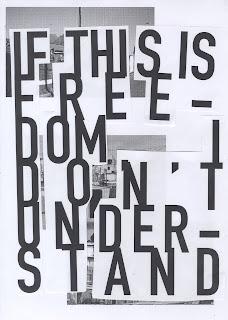OUGD505
Overall
Module Evaluation
This module
was heavily research based in all areas. Practice, technical and conceptual research
was conducted to gain expert knowledge on relevant subjects. This created work
that is relevant and well considered. Both briefs in the module allowed for
personal interests to be explored and independent solutions to be executed.
Studio
brief one was very open. The genre chosen was punk. I am happy with the result,
I think it carries a strong message and hope It will gain some sort of
reaction. The idea behind it was based on the protest mentality as I feel
people my age often complain about the state of things but actively do very
little about it. I found researching the punk genre to be interesting and found
that Punk is more about politics and youth culture than the music itself. I
think my research skills are improving as I am using more varied source like
documentaries and podcasts rather than just website articles.
The outcome
is a set of two posters. It is an appropriate response. However, the brief asked
for an object to be produced and I think if I allowed more time for development
the outcome could have developed to be something more substantial and ambitious,
not simply print based. If I was to do this brief again I would have chosen a
genre I knew nothing about, purely for my own awareness.
Studio
brief two required outputs that related to social, political and ethical
change. The research for this brief was in-depth. It included the examination
of existing ethically motivated design campaigns as well as primary and
secondary research, specific to the chosen cause. This brief allowed me to
explore something I was passion about and get first hand understand how the
same issue affected other people through primary research. Presenting findings
in front of a group has helped improve my public speaking as well as giving
much needed experience of how to present data in a visually interesting way. I
think I applied my research to create an interesting an original product that
would be successful in creating change. The range created was consistent and
wide distribution is achievable. I do think there is still room to push this
brief further and create a presence online. I will continue to work on this
brief after submission to create a design guideline booklet that I will include
in my portfolio.
Overall I
think my outputs for this module are not equal in result. My final output for
studio brief two is much more substantial both in design and development than
my output for studio brief one. I feel that both briefs would have benefited
from more peer led feedback from outside of my friendship group, even if its
self-initiated. Time management could have been improved, especially in
relation to studio brief one. In the future, I will plan my time more
effectively, breaking it down by brief, rather than module.































































